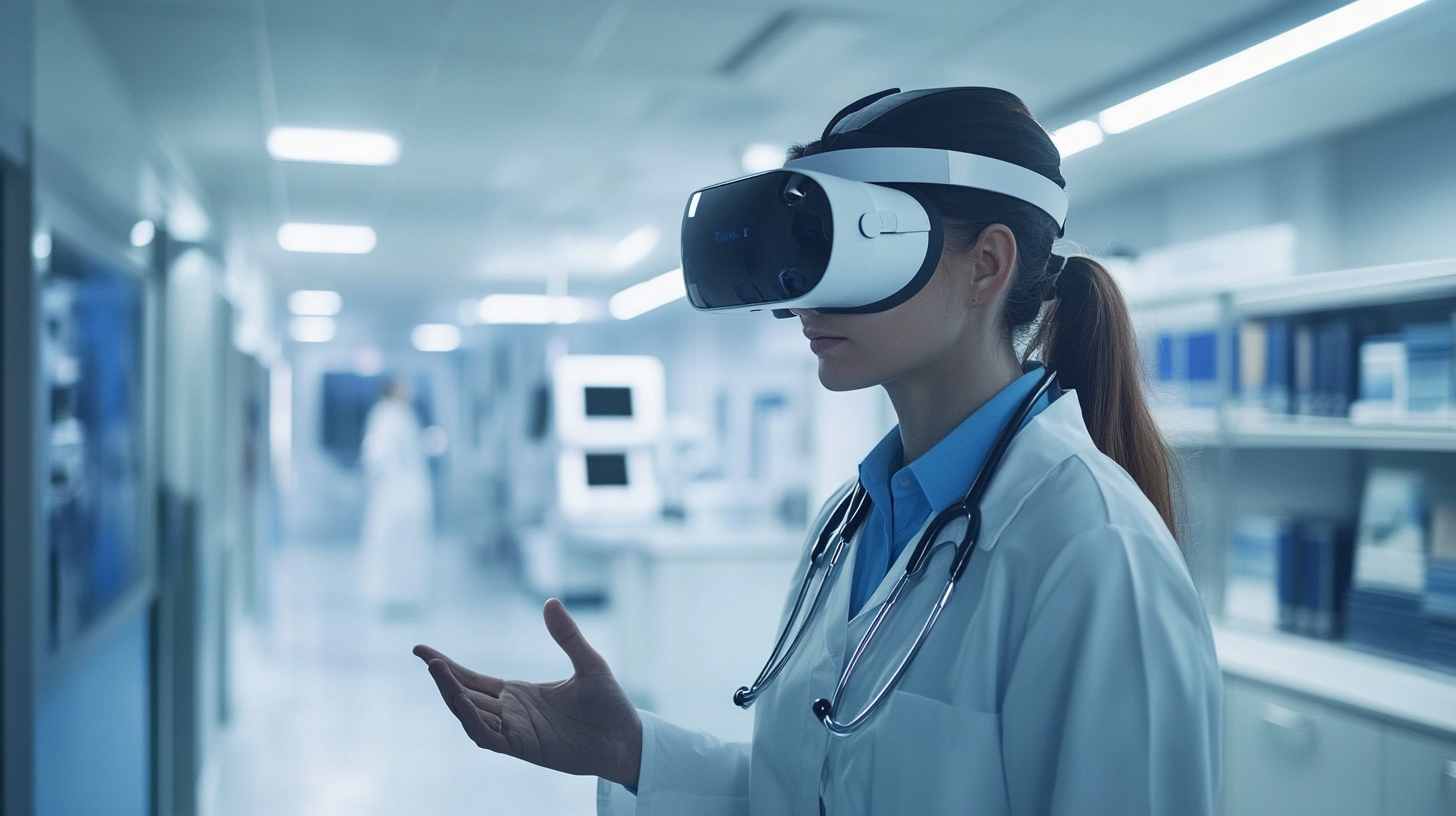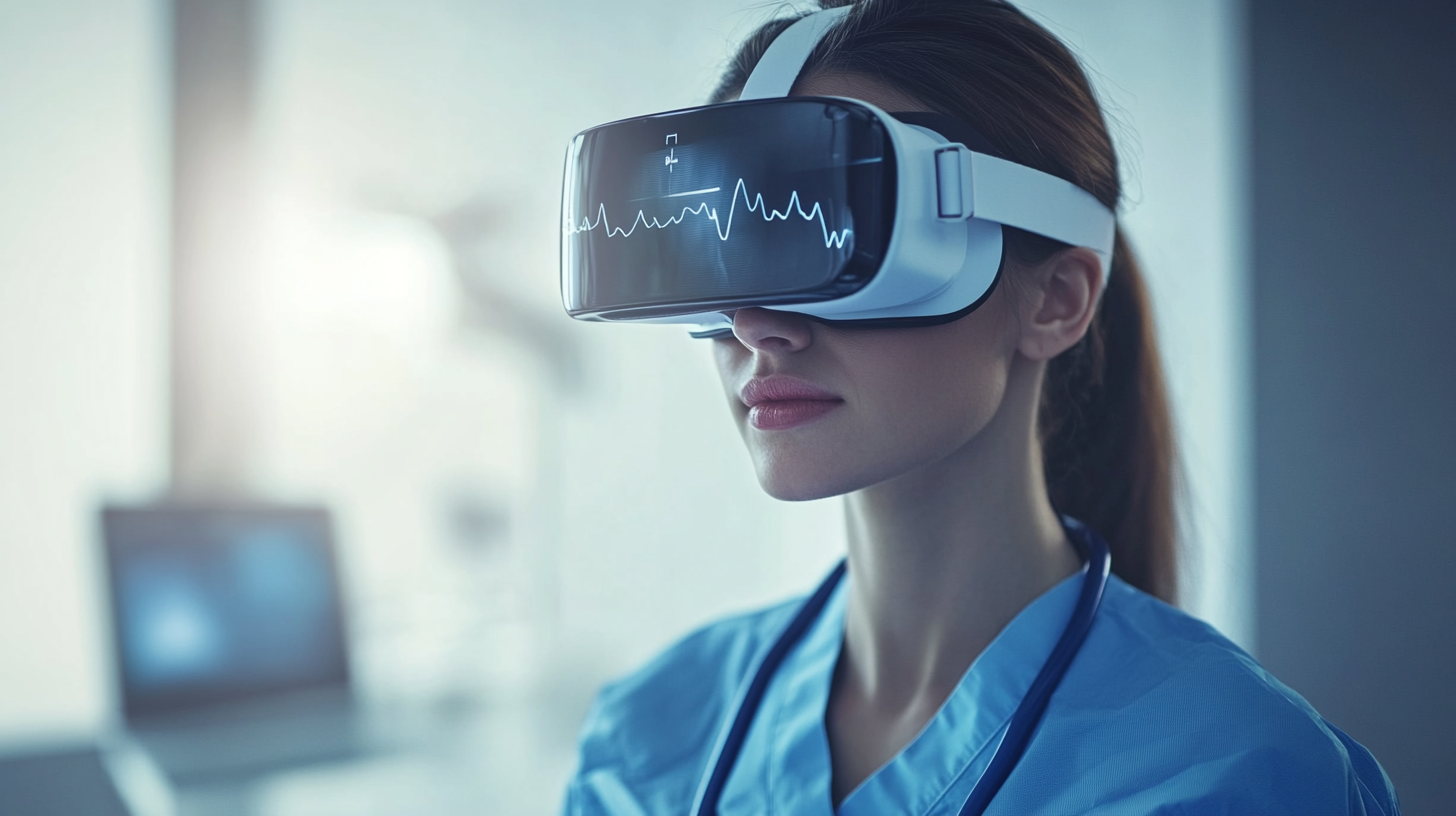As the landscape of healthcare continues to evolve, the integration of technology into training methodologies has become increasingly vital. Among these advancements, VR training in healthcare represents a groundbreaking approach that offers immersive simulations, allowing professionals to hone their skills in a risk-free environment. This innovative alternative to traditional training methods not only enhances the retention of medical knowledge but also fosters the development of critical decision-making skills under realistic scenarios. By leveraging virtual reality, healthcare institutions can replicate complex procedures and patient interactions, thus preparing practitioners for real-world challenges they will face in their careers. This blog will explore the transformative potential of VR training in healthcare, examining its benefits, implementations, and the future it holds for training healthcare professionals in a dynamic and ever-changing field.

The emergence of virtual reality (VR) as a transformative tool in medical training is reshaping how healthcare professionals acquire essential skills. Among the numerous advancements in technology, VR stands out as a game-changer, offering immersive training experiences that simulate real-life scenarios without the associated risks. By replicating complex medical procedures and situations, VR enables learners to practice repeatedly, fostering muscle memory and decision-making abilities that are critical in high-stakes environments.
Furthermore, the integration of advanced technologies like VR into healthcare extends beyond traditional classroom settings, allowing for remote collaboration and training. Healthcare organizations can utilize virtual environments to conduct training sessions for nurses and medical staff, ensuring consistent skill development regardless of geographical barriers. As the landscape of medical education evolves, the combination of VR with other innovative technologies like artificial intelligence promises a future where healthcare professionals can hone their skills in a more effective, engaging, and efficient manner. This approach not only enhances learning outcomes but also ultimately leads to better patient care and safety, signifying a significant leap in medical training methodology.
 Virtual reality (VR) training is revolutionizing how healthcare professionals enhance patient care. By immersing practitioners in realistic simulations, VR provides a safe and controlled environment for skills development. A recent report by the Journal of Medical Internet Research indicates that VR training can increase the retention of knowledge and skills by 75% compared to traditional learning methods. This improvement translates directly into better patient outcomes, as medical staff are more prepared to handle complex scenarios in real-life settings.
Virtual reality (VR) training is revolutionizing how healthcare professionals enhance patient care. By immersing practitioners in realistic simulations, VR provides a safe and controlled environment for skills development. A recent report by the Journal of Medical Internet Research indicates that VR training can increase the retention of knowledge and skills by 75% compared to traditional learning methods. This improvement translates directly into better patient outcomes, as medical staff are more prepared to handle complex scenarios in real-life settings.
To maximize the benefits of VR in training, healthcare institutions should consider incorporating regular VR sessions into their professional development programs. Tips for effective implementation include ensuring that the VR content is continually updated to reflect the latest medical practices and protocols, and fostering a collaborative environment where practitioners can share their experiences and insights from VR simulations.
Moreover, studies have shown that VR training can significantly reduce the time required to develop competencies in various medical procedures. According to research published in the Journal of Surgical Education, surgeons trained with VR tools performed procedures more accurately than their counterparts who relied solely on traditional methods. By embracing these innovative training techniques, healthcare organizations can not only improve skill acquisition but also ultimately enhance the quality of care provided to patients.
The advancement of virtual reality (VR) training is revolutionizing the way healthcare professionals acquire skills and knowledge. However, accessibility and cost-effectiveness remain significant barriers to widespread implementation. Many institutions struggle with the high initial costs of VR equipment and software, which can deter investment in these innovative training solutions. Yet, as technology evolves, the price of VR tools is gradually decreasing, making them more feasible for various healthcare settings.
To enhance accessibility, healthcare organizations can explore partnerships with VR training providers to leverage shared resources and reduce individual costs. Additionally, utilizing open-source VR platforms can offer cost-effective alternatives for training. By incorporating VR training into existing curricula, facilities can maximize their investment, ensuring that professionals stay updated in an ever-evolving healthcare landscape.
Tip: Consider allocating a portion of training budgets specifically for VR technologies and conducting trials with smaller groups to assess the impact before full-scale implementation. Another tip is to engage in collaborative training sessions with other healthcare institutions to share resources and experiences, making VR training a more approachable option for everyone involved.
This chart illustrates the perceived benefits of implementing Virtual Reality (VR) training among healthcare professionals, examining areas such as accessibility, cost-effectiveness, and overall effectiveness in skill enhancement.
As the landscape of medical training evolves, China has emerged as a pivotal player in the development of virtual reality (VR) innovations. By integrating cutting-edge VR technology with healthcare education, Chinese companies are reshaping how medical professionals are trained. These immersive simulations allow trainees to practice real-life scenarios in a controlled environment, fostering hands-on experience without the risk to patient safety. This approach not only enhances the skillset of healthcare workers but also promotes confidence and competence in their practices.
Furthermore, Chinese innovation in VR medical training is gaining traction on a global scale. With its commitment to research and development, China is setting new standards in the medical field. Collaborative efforts with international institutions are leading to the creation of globally accepted VR training programs that transcend geographical boundaries. As these initiatives gain momentum, healthcare professionals worldwide can benefit from the advancements in VR technology, ultimately leading to improved patient care and safety. The synergy of Chinese innovation and global collaboration is paving the way for a revolution in how healthcare professionals are trained, ensuring they are better equipped to meet the challenges of tomorrow's healthcare landscape.
| Dimension | Value |
|---|---|
| Current VR Training Adoption Rate | 25% |
| Projected Growth Rate (2024-2030) | 30% CAGR |
| Percentage of Training Programs Integrating VR | 60% |
| Average Cost Reduction in Training with VR | 40% |
| Overall Improvement in Retention Rates | 70% |
| Geographic Regions Leading in VR Medical Training | North America, Europe, Asia |
| Major VR Training Areas in Healthcare | Surgery, Anatomy, Patient Interaction |
| Chinese VR Companies Leading in Innovation | 10+ significant players |
The integration of Artificial Intelligence (AI) and Virtual Reality (VR) in healthcare education is rapidly transforming how professionals are trained across various specialties. A recent report by the American Association of Medical Colleges highlighted that immersive learning environments can boost knowledge retention by up to 75%, compared to traditional training methods. This evolution is particularly crucial as the healthcare landscape demands more adaptive and personalized training approaches to keep pace with emerging technologies and clinical practices.

With AI algorithms enhancing VR simulations, healthcare professionals can practice complex procedures in a risk-free environment, resulting in enhanced clinical skills and better preparedness for real-world scenarios. For instance, a survey by the World Health Organization indicated that incorporating such technologies in medical education could potentially reduce training time by 30%, allowing quicker deployment of skilled practitioners in critical healthcare settings. As the demand for skilled healthcare workers continues to rise, the fusion of AI and VR is set to redefine the education framework, enabling a future where healthcare professionals can learn and adapt more dynamically than ever before.
